Search Result
Results for "
SHSY5Y
" in MedChemExpress (MCE) Product Catalog:
| Cat. No. |
Product Name |
Target |
Research Areas |
Chemical Structure |
-
- HY-N10764
-
|
|
Others
|
Cancer
|
|
Acetylexidonin is a diterpenoid compound with anti-inflammation and cancer activity. Acetylexidonin inhibits tumor cells with IC50s of 3.69 μM (NB4) and 26.22 μM (SHSY5Y), respectively .
|
-
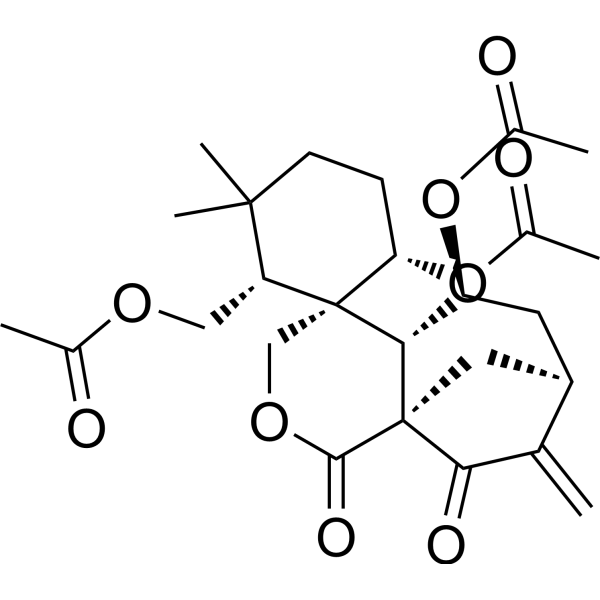
-
- HY-P5902
-
-
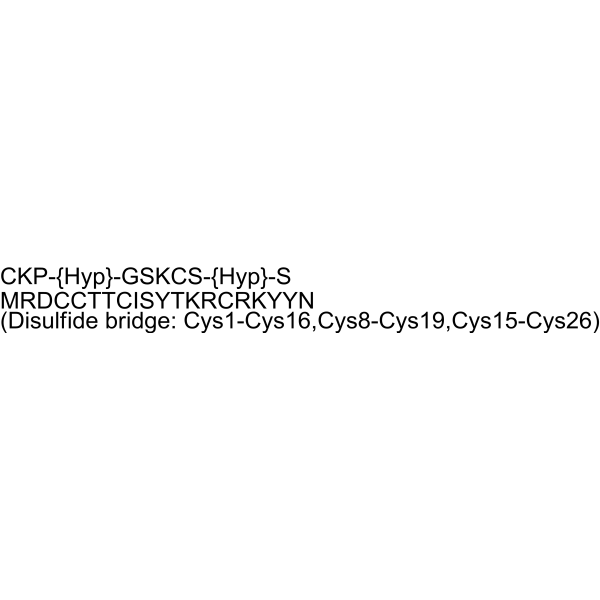
-
- HY-162340
-
|
|
Cholinesterase (ChE)
|
Neurological Disease
|
|
Z32439948 is a butyrylcholinesterase (BChE) inhibitor (IC50: 1.4 μM, hBChE) and is a derivative of m-sulfamoylbenzamide. Z32439948 also exhibited neuroprotective effects against glutamate in SH-SY5Y cells .
|
-

-
- HY-139708
-
|
|
iGluR
|
Neurological Disease
|
|
NMDA receptor antagonist-3, a NMDA receptor antagonist, stands out with a remarkable percentage of recovery (40.0%, at 100 μM) and safe toxicological profile in SH-SY5Y and human adipose mesenchymal stem cells.
|
-
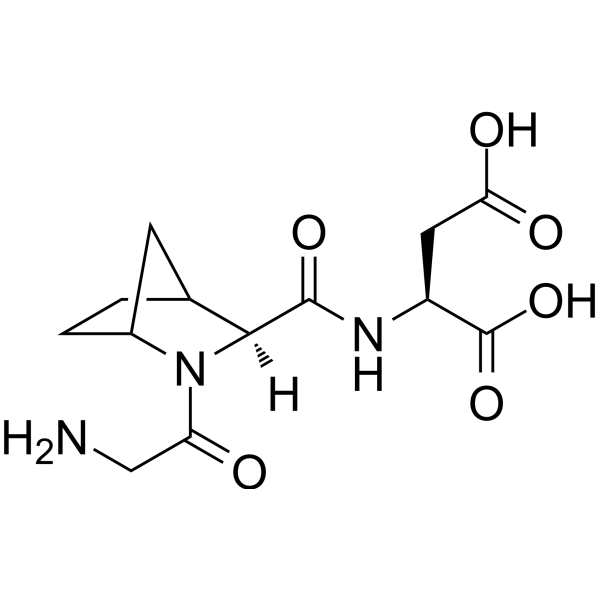
-
- HY-N12657
-
|
|
Others
|
Neurological Disease
|
|
Retinestatin, a new polyol polyketide, can protect SH-SY5Y dopaminergic cells from MPP + (HY-W008719)-induced cytotoxicity. Retinestatin shows neuroprotective effects in an in vitro model of Parkinson’s disease .
|
-
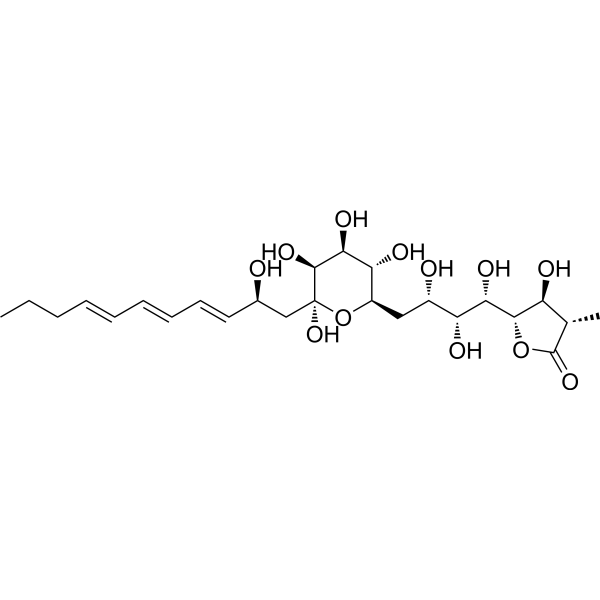
-
- HY-N5045
-
|
|
Others
|
Inflammation/Immunology
|
|
Jionoside A1 isolated from Radix Rehmanniae Praeparata displays dose dependent immune-enhancement activity and possesses moderate protective activities on H2O2-treated SH-SY5Y cells .
|
-
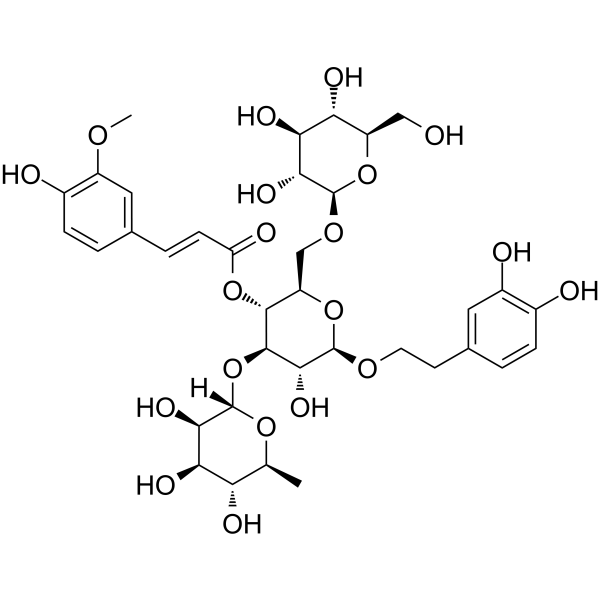
-
- HY-145243
-
|
|
Apoptosis
|
Others
|
|
PDPOB is a phenyl carboxylic acid derivative. PDPOB displays protective roles against OGD/R-evoked multiaspect neuronal deterioration in SH-SY5Y cells, as evidenced by alleviated mitochondrial dysfunction, oxidative stress, and apoptosis. PDPOB has the potential for the research of cerebral ischemia .
|
-
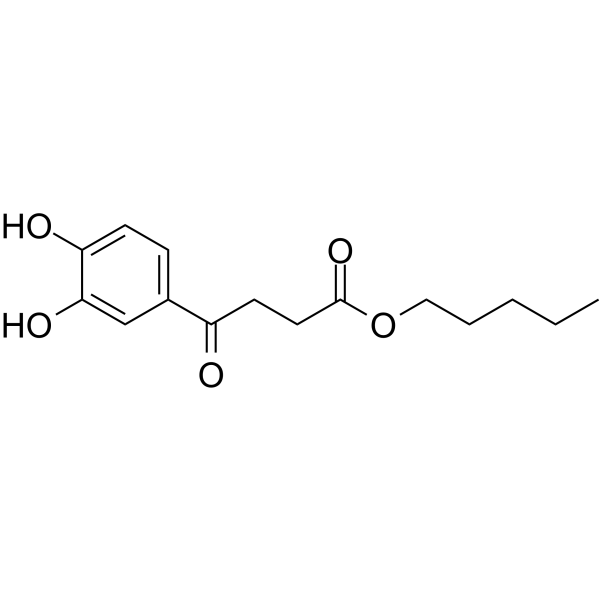
-
- HY-N0303
-
|
|
Mitochondrial Metabolism
Apoptosis
|
Neurological Disease
|
|
Idebenone, a well-appreciated mitochondrial protectant, exhibits protective efficacy against neurotoxicity and can be used for the research of Alzheimer's disease, Huntington's disease. Idebenone (oxidised form) has a dose-dependent inhibitory effect on the enzymatic metabolism of arachidonic acid in astroglial homogenates (IC50=16.65 μM) . Idebenone, a coenzyme Q10 analog and an antioxidant, induces apoptotic cell death in the human dopaminergic neuroblastoma SHSY-5Y cells . Idebenone quickly crosses the blood-brain barrier.
|
-

-
- HY-N8931
-
|
Lithospermic acid monomethyl ester
|
Akt
|
Neurological Disease
|
|
Monomethyl lithospermate activates the PI3K/AKT pathway, which plays a protective role in nerve injury. Monomethyl lithospermate can improve the survival ability of SHSY-5Y cells, inhibit the breakdown of mitochondrial membrane potential (MMOP) and inhibit cell apoptosis. Monomethyl lithospermate also reduced the level of oxidative stress in the brain tissue of rats with middle artery occlusion (MCAO) and improved nerve damage in rats with ischemic stroke (IS) .
|
-

-
- HY-P3275
-
|
Aβ(17-40)
|
Amyloid-β
|
Neurological Disease
|
|
β-Amyloid (17-40) (Aβ(17-40)) is a fragment of Amyloid-β peptide that has shown neurotoxic activities in SH-SY5Y and IMR-32 cells. β-Amyloid (17-40) can be used for the research of neurological disease .
|
-

-
- HY-161156
-
|
|
Cholinesterase (ChE)
|
Neurological Disease
Cancer
|
|
BChE-IN-26 (Compound 7b) is a selective AChE and BChE inhibitor with Ki value of 35 μM and 1.6 μM. BChE-IN-26 has cytotoxicity to human neuroblastoma (SH-SY5Y) cell line. BChE-IN-26 can be used for the research of Alzheimer’s disease .
|
-

-
- HY-153166
-
|
|
GSK-3
|
Neurological Disease
|
|
PT-65 is a potent and selective GSK3 degrader with the highest degradation capacity of GSK3α (DC50= 28.3 nM) and GSK3β (DC50= 34.2 nM) in SH-SY5Y cells. PT-65 can be used in Alzheimer's disease research .
|
-

-
- HY-14374
-
GPP78
1 Publications Verification
CAY10618
|
NAMPT
Autophagy
|
Inflammation/Immunology
Cancer
|
|
GPP78 (CAY10618) is a potent Nampt inhibitor with an IC50 of 3.0 nM for nicotinamide adenine dinucleotide (NAD) depletion. GPP78 is cytotoxic to neuroblastoma cell line SH-SY5Y cells with an IC50 of 3.8 nM by inducing autophagy. GPP78 has anti-cancer and anti-inflammatory effects .
|
-
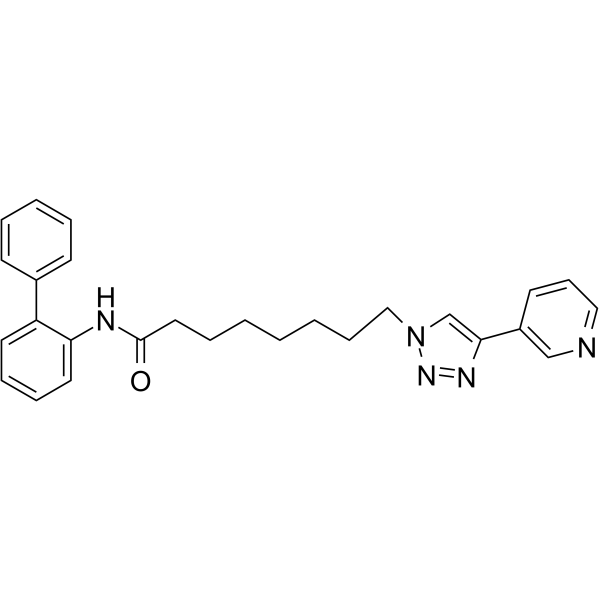
-
- HY-N0076
-
|
(-)-Bilobalide
|
Apoptosis
Autophagy
Endogenous Metabolite
|
Neurological Disease
|
|
Bilobalide, a sesquiterpene trilactone constituent of Ginkgo biloba, inhibits the NMDA-induced efflux of choline with an IC50 value of 2.3 µM. Bilobalide prevents apoptosis through activation of the PI3K/Akt pathway in SH-SY5Y cells. Exerts protective and trophic effects on neurons .
|
-

-
- HY-147938
-
|
|
Cholinesterase (ChE)
Amyloid-β
|
Neurological Disease
|
|
AChE-IN-19 (compound A15) is a highly potent AChE inhibitor with an IC50 value of 0.56 μM, also inhibits Aβ aggregation. AChE-IN-19 has potent neuroprotective activities and nearly no toxicity on SH-SY5Y cells. AChE-IN-19 can be used for researching Alzheimer's disease .
|
-
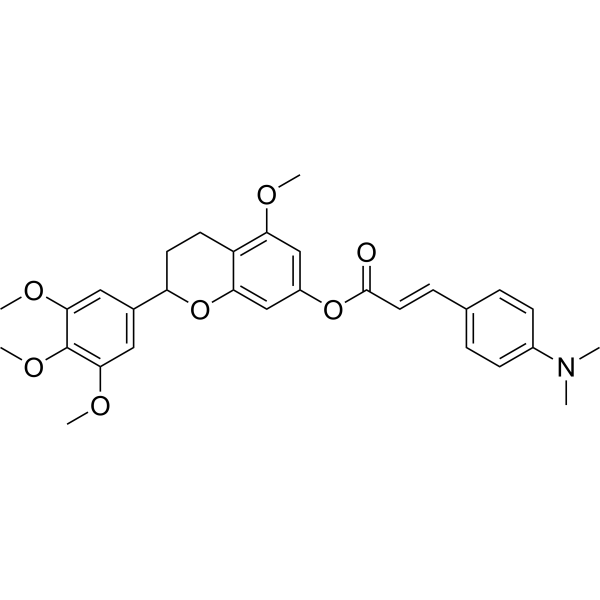
-
- HY-155466
-
|
|
Dopamine Receptor
|
Neurological Disease
|
|
Boc-MIF-1-Am (compound 2) is a human dopamine D2 receptor enhancer (EC50=17.82 nM) and is a bioconjugate of melanostatin (MIF-1) and amantadine. Boc-MIF-1-Am (200 μM) exhibited mild neurotoxicity in SH-SY5Y cells .
|
-
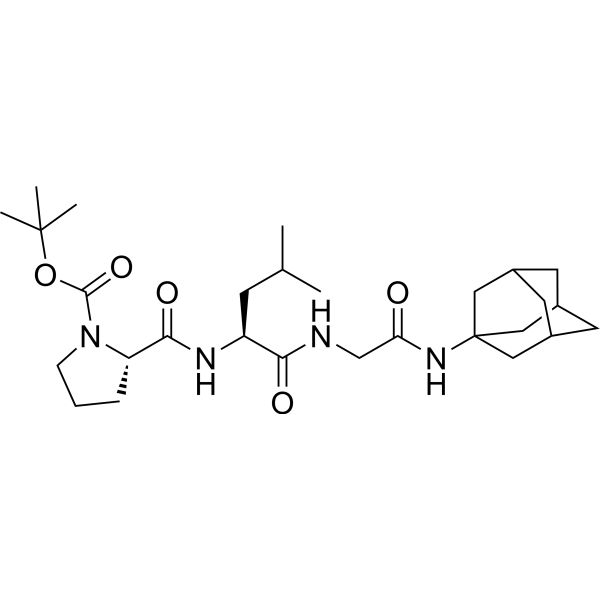
-
- HY-10974
-
MK-0752
Maximum Cited Publications
8 Publications Verification
|
γ-secretase
|
Neurological Disease
Cancer
|
|
MK-0752 is a potent, orally active and specific γ-secretase inhibitor, showing dose-dependent reduction of Aβ40 with an IC50 of 5 nM in human SH-SY5Y cells. MK-0752 crosses the blood-brain barrier. MK-0752 reduces newly generated CNS Aβ in vivo .
|
-
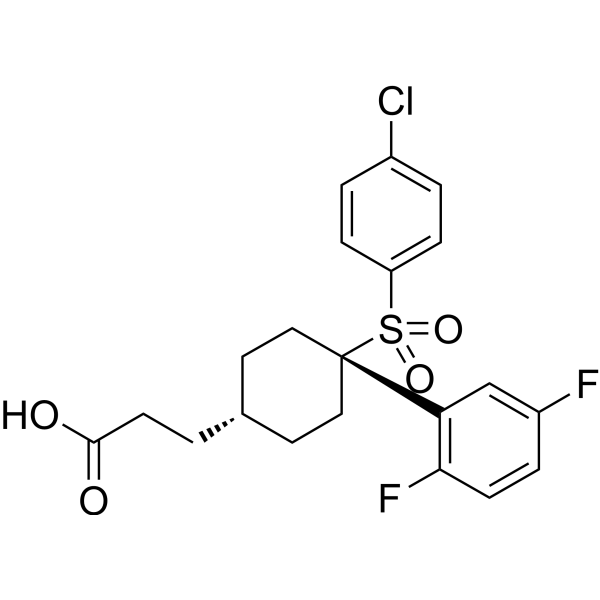
-
- HY-163189
-
|
|
Bcr-Abl
|
Neurological Disease
|
|
c-ABL-IN-6 (compound A6) is a c-ABL inhibitor with IC50 value of 16.6 nM. c-ABL-IN-6 displays higher neuroprotective effects against SH-SY5Y cell death induced by MPP + (HY-W008719). c-ABL-IN-6 can be used for the research of neurodegenerative disorder .
|
-
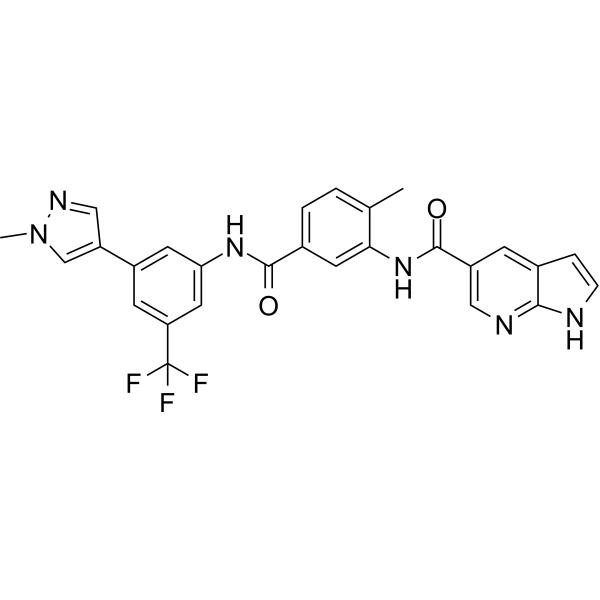
-
- HY-144826
-
|
|
GSK-3
|
Neurological Disease
|
|
ZDWX-25 is a highly potent GSK-3β and DYRK1A dual inhibitor with an IC50 value of 71 nM for GSK-3β. ZDWX-25 possesses significant cytotoxic activities against SH-SY5Y and HL-7702 cells. ZDWX-25 can be used for researching alzheimer's disease .
|
-
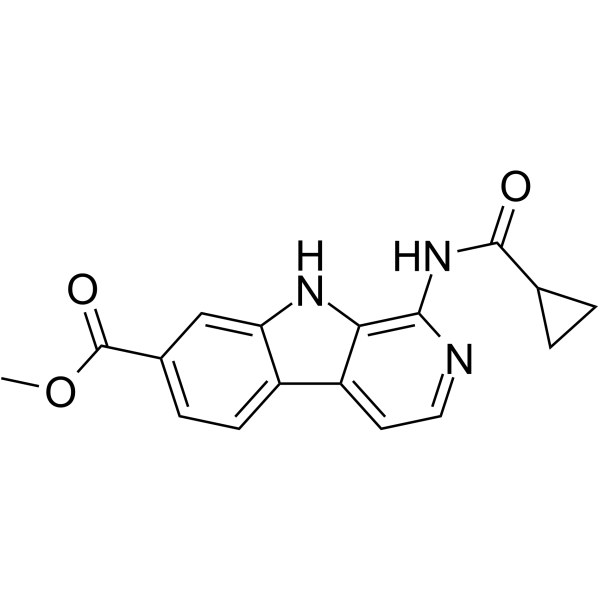
-
- HY-134205A
-
|
|
Keap1-Nrf2
|
Neurological Disease
Metabolic Disease
|
|
CBR-470-1 is an inhibitor of the glycolytic enzyme phosphoglycerate kinase 1 (PGK1). CBR-470-1 is also a non-covalent Nrf2 activator. CBR-470-1 protects SH-SY5Y neuronal cells against MPP +-induced cytotoxicity through activation of the Keap1-Nrf2 cascade .
|
-

-
- HY-146140
-
|
|
Amyloid-β
|
Neurological Disease
|
|
Aβ-IN-4 (compound 12) is a potent amyloid β (Aβ) inhibitor. Aβ-IN-4 inhibits Aβ42 aggregation. However, Aβ-IN-4 can not alleviate the neurotoxicity of Aβ42 in SH-SY5Y cells. Aβ-IN-4 can not change the aggregation state of Aβ42 into a nontoxic one .
|
-
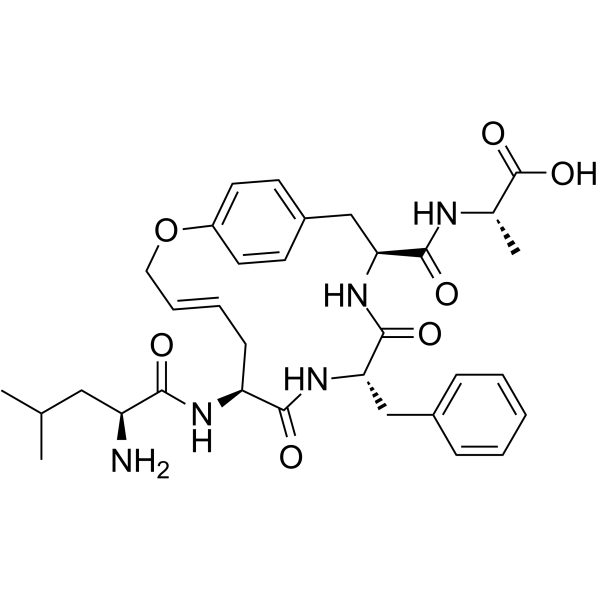
-
- HY-146139
-
|
|
Amyloid-β
|
Neurological Disease
|
|
Aβ-IN-3 (compound 1) is a potent amyloid β (Aβ) inhibitor. Aβ-IN-3 inhibits Aβ42 aggregation. However, Aβ-IN-3 can not alleviate the neurotoxicity of Aβ42 in SH-SY5Y cells. Aβ-IN-3 can not change the aggregation state of Aβ42 into a nontoxic one .
|
-
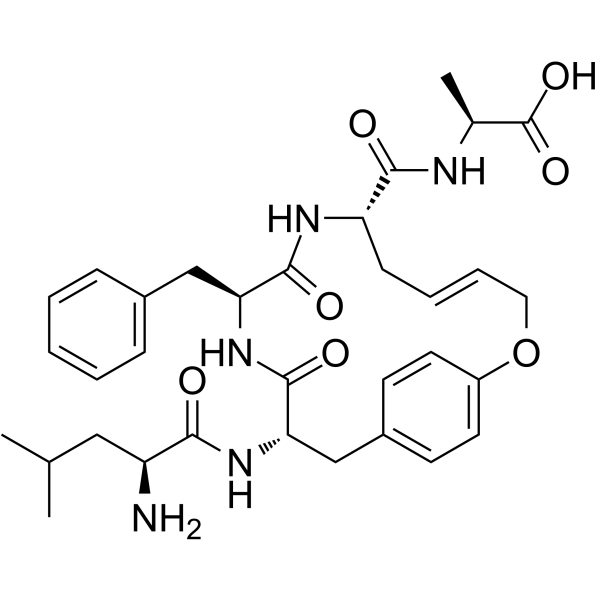
-
- HY-N1970
-
|
|
|
|
|
5,7-Dihydroxychromone, the extract of Cudrania tricuspidata, activates Nrf2/ARE signal and exerts neuroprotective effects against 6-hydroxydopamine (6-OHDA)-induced oxidative stress and apoptosis. 5,7-Dihydroxychromone inhibits the expression of activated caspase-3 and caspase-9 and cleaved PARP in 6-OHDA-induced SH-SY5Y cells .
|
-
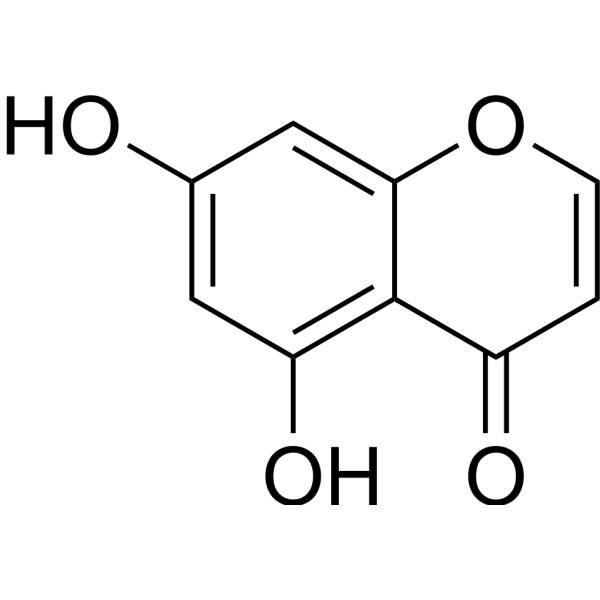
-
- HY-106224B
-
|
Hypocretin-1 (human, rat, mouse) (acetate)
|
Orexin Receptor (OX Receptor)
|
Neurological Disease
|
|
Orexin A (Hypocretin-1) (human, rat, mouse) acetate is a hypothalamic neuropeptide with analgesic properties (crosses the blood-brain barrier). Orexin A (human, rat, mouse) acetate is also an OX1R agonist that induces the expression of BDNF and TH proteins in SH-SY5Y cells in a time- and dose-dependent manner. Orexin A (human, rat, mouse) acetate can be used in studies of appetite regulation, neurodegenerative diseases and modulation of injurious messaging .
|
-
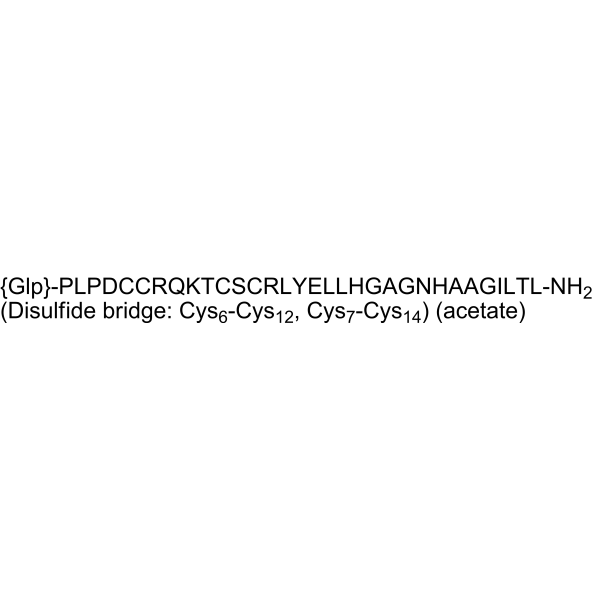
-
- HY-P5894
-
|
Galanin-like peptide (3-32)
|
Neuropeptide Y Receptor
|
Neurological Disease
|
|
human GALP (3-32) (Galanin-like peptide (3-32)) is a potent galanin receptor agonist with high affinity for both GalR1 (IC50=33 nM) and GalR2 (IC50=15 nM) in a competitive binding study. human GALP (3-32) exhibits the high potency in altering the extracellular acidification rate of SH-SY5Y cells transfected with GalR2 (EC50=360 nM) .
|
-

-
- HY-156348
-
|
|
Monoamine Oxidase
Autophagy
Apoptosis
Cholinesterase (ChE)
|
Neurological Disease
|
|
MAO-B-IN-26 (Compound IC9) is a MAO-B and acetylcholinesterase inhibitor. MAO-B-IN-26 protects SH?SY5Y cells against Aβ induced cytotoxicity, morphological changes, ROS generation and membrane damage. MAO-B-IN-26 also inhibits Aβ induced autophagy and apoptosis. MAO-B-IN-26 can be used as a neuroprotective agent against Alzheimer’s disease .
|
-

-
- HY-117482
-
|
|
γ-secretase
|
Neurological Disease
|
|
BPN-15606 is a highly potent, orally active γ-secretase modulator (GSM), attenuates the production of Aβ42 and Aβ40 by SHSY5Y neuroblastoma cells with IC50 values of 7 nM and 17nM, respectively. BPN-15606 lowers Aβ42 and Aβ40 levels in the central nervous system of rats and mice. BPN-15606 has acceptable PK/PD properties, including bioavailability, half-life, and clearance .
|
-
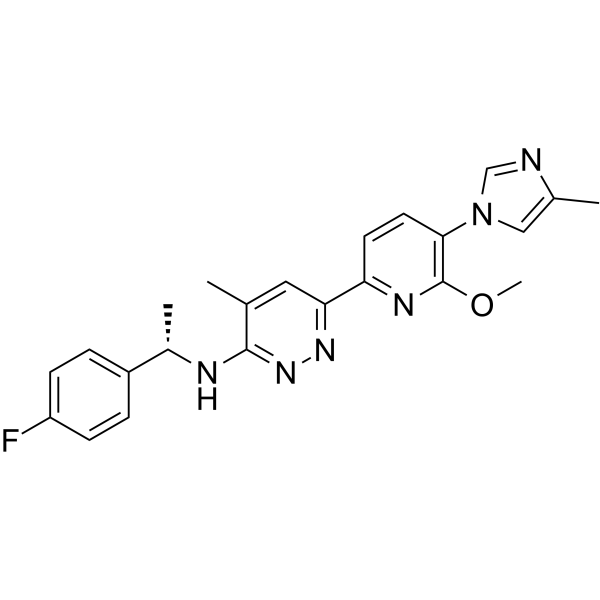
-
- HY-117482A
-
|
|
γ-secretase
|
Neurological Disease
|
|
BPN-15606 besylate is a highly potent, orally active γ-secretase modulator (GSM), attenuates the production of Aβ42 and Aβ40 by SHSY5Y neuroblastoma cells with IC50 values of 7 nM and 17nM, respectively. BPN-15606 besylate lowers Aβ42 and Aβ40 levels in the central nervous system of rats and mice. BPN-15606 besylate has acceptable PK/PD properties, including bioavailability, half-life, and clearance .
|
-
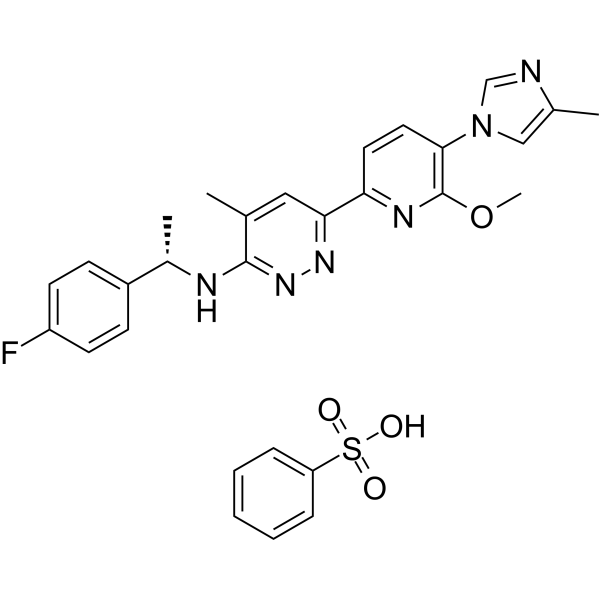
-
- HY-N8161
-
|
Kaempferol 3,7-diglucoside
|
Glucosidase
Cholinesterase (ChE)
|
Neurological Disease
|
|
Kaempferol-3,7-di-O-β-glucoside (Kaempferol 3,7-diglucoside), a flavonol, possesses enzyme inhibition property towards α-amylase, α-glucosidase and Acetylcholinesterase. Kaempferol-3,7-di-O-β-glucoside protects differentiating neuronal cells, SH-SY5Y from Amyloid β peptide-induced injury. Kaempferol-3,7-di-O-β-glucoside has the potential for Alzheimer's research .
|
-
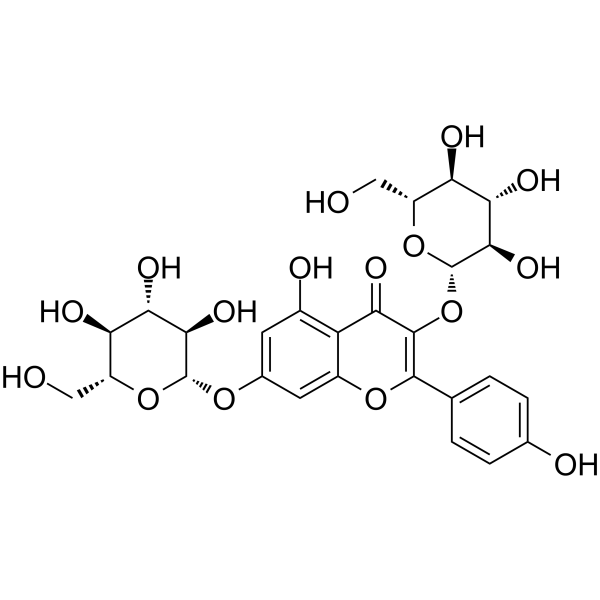
-
- HY-147939
-
|
|
Cholinesterase (ChE)
Amyloid-β
|
Cancer
|
|
AChE/BuChE-IN-3 is a potent and blood-brain barrier (BBB) penetrant AChE and BuChE dual inhibitor with IC50s of 0.65 μM and 5.77 μM for AChE and BuChE. AChE/BuChE-IN-3 also inhibits Aβ1-42 aggregation. AChE/BuChE-IN-3 has effectively neuroprotective activities and nearly no toxicity on SH-SY5Y cells. AChE/BuChE-IN-3 can be used for researching Alzheimer's disease .
|
-

-
- HY-136182
-
|
|
Na+/Ca2+ Exchanger
|
Cardiovascular Disease
Neurological Disease
|
|
YM-244769 dihydrochloride is a potent, selective and orally active Na +/Ca 2+ exchanger (NCX) inhibitor. YM-244769 dihydrochloride preferentially inhibits NCX3 and suppresses the unidirectional outward NCX current (Ca 2+ entry mode), with IC50s of 18 nM and 50 nM, respectively. YM-244769 dihydrochloride efficiently protects against hypoxia/reoxygenation-induced SH-SY5Y neuronal cell damage. YM-244769 dihydrochloride can also increase urine volume and urinary excretion of electrolytes in mice .
|
-

-
- HY-146691
-
|
|
Monoamine Oxidase
|
Neurological Disease
|
|
hMAO-B-IN-2 (compound 6j) is an orally active, potent, selective and BBB penetrated and competitive reversible hMAO-B inhibitor, with an IC50 of 4 nM. hMAO-B-IN-2 shows low toxicity and good neuroprotective effects in SH-SY5Y cell. hMAO-B-IN-2 can be used for alzheimer’s disease research . hMAO-B-IN-2 is a click chemistry reagent, itcontains an Alkyne group and can undergo copper-catalyzed azide-alkyne cycloaddition (CuAAc) with molecules containing Azide groups.
|
-

-
- HY-136182A
-
|
|
Na+/Ca2+ Exchanger
|
Cardiovascular Disease
Neurological Disease
|
|
YM-244769 is a potent, selective and orally active Na +/Ca 2+ exchanger (NCX) inhibitor. YM-244769 preferentially inhibits NCX3 and suppresses the unidirectional outward NCX current (Ca 2+ entry mode), with IC50s of 18 nM and 50 nM, respectively. YM-244769 efficiently protects against hypoxia/reoxygenation-induced SH-SY5Y neuronal cell damage. YM-244769 can also increase urine volume and urinary excretion of electrolytes in mice .
|
-

-
- HY-107659
-
|
|
Na+/Ca2+ Exchanger
|
Cardiovascular Disease
Neurological Disease
|
|
YM-244769 hydrochloride is a potent, selective and orally active Na +/Ca 2+ exchanger (NCX) inhibitor. YM-244769 hydrochloride preferentially inhibits NCX3 and suppresses the unidirectional outward NCX current (Ca 2+ entry mode), with IC50s of 18 nM and 50 nM, respectively. YM-244769 hydrochloride efficiently protects against hypoxia/reoxygenation-induced SH-SY5Y neuronal cell damage. YM-244769 hydrochloride can also increase urine volume and urinary excretion of electrolytes in mice .
|
-

-
- HY-146483
-
|
|
Amyloid-β
|
Neurological Disease
Inflammation/Immunology
|
|
Anti-Aβ agent 1A (compound M15) has potent activity against amyloid-β. Anti-Aβ agent 1A possesses can significantly inhibit LPS-induced levels of IL-1β, IL-6 and TNF-α, and reduces the apoptosis of SH-SY5Y induced by H2O2 through mitochondria pathway. Anti-Aβ agent 1A possesses antioxidant, anti-inflammatory, anti-Aβ toxicity and neuroprotective activities. Anti-Aβ agent 1A can be used for researching Alzheimer’s disease (AD) .
|
-

-
- HY-112371
-
|
|
CDK
|
Cancer
|
|
(S)-CR8 is the S-isomer of CR8. (S)-CR8 is a potent and selective CDK inhibitor with IC50s of 0.060, 0.080, 0.11, 0.12, and 0.15 μM for CDK2/cyclin E, CDK2/cyclin A, CDK9/cyclin T, CDK5/p25, and CDK1/cyclin B, respectively. (S)-CR8 reduces SH-SY5Y cells survival (IC50 0.40 μM) .
|
-
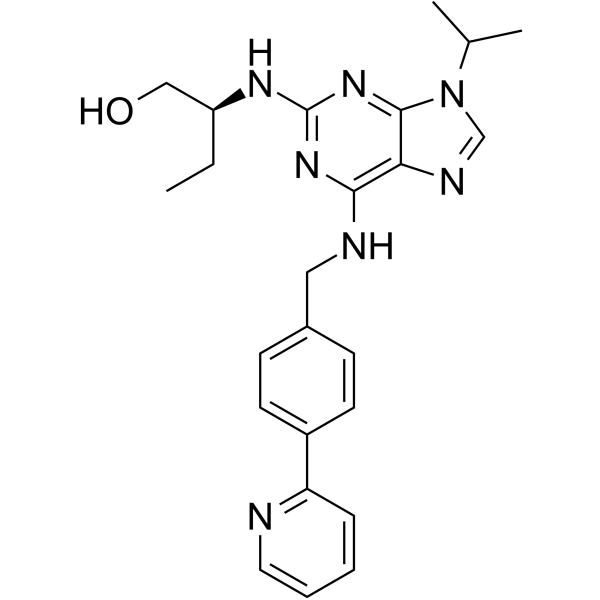
-
- HY-147547
-
|
|
Amyloid-β
|
Neurological Disease
|
|
SV5 is a potent anti-Alzheimer agent. SV5 can significantly protect SHSY-5Y cells against Aβ1-42-induced death. SV5 shows moderate antioxidant and good neuroprotective activities. SV5 shows the high stability in human plasma and the best pharmacological profile .
|
-
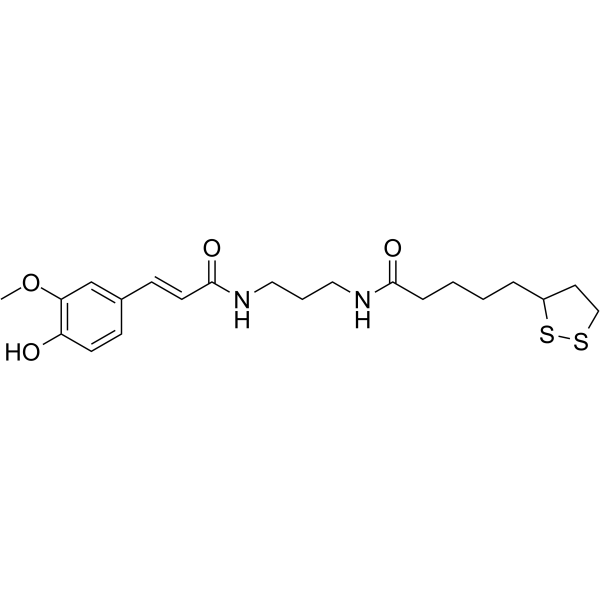
-
- HY-149803
-
|
|
Sigma Receptor
|
Neurological Disease
|
|
S1R agonist 1 (Compound 6b) is a selective S1R agonist with Kis of 0.93 nM and 72 nM for S1R and S2R, respectively. S1R agonist 1 exhibits neuroprotection against ROS and NMDA-induced neurotoxicity .
|
-
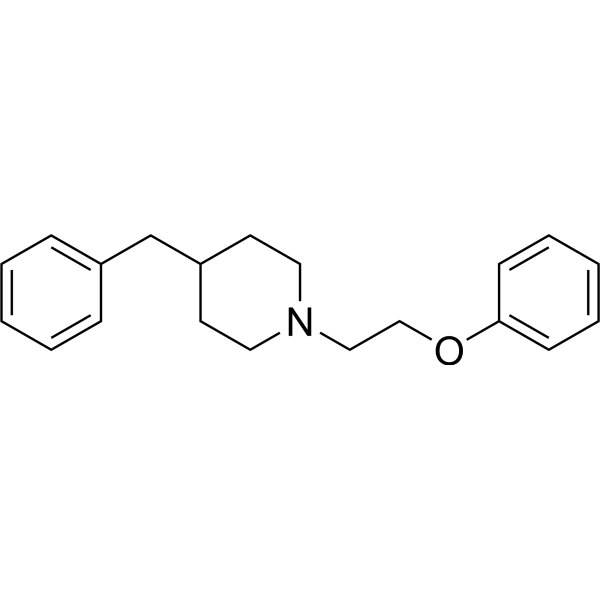
-
- HY-149804
-
|
|
Sigma Receptor
|
Neurological Disease
|
|
S1R agonist 2 (Compound 8b) is a selective S1R agonist with Kis of 1.1 nM and 88 nM for S1R and S2R, respectively. S1R agonist 2 exhibits neuroprotection against ROS and NMDA-induced neurotoxicity .
|
-
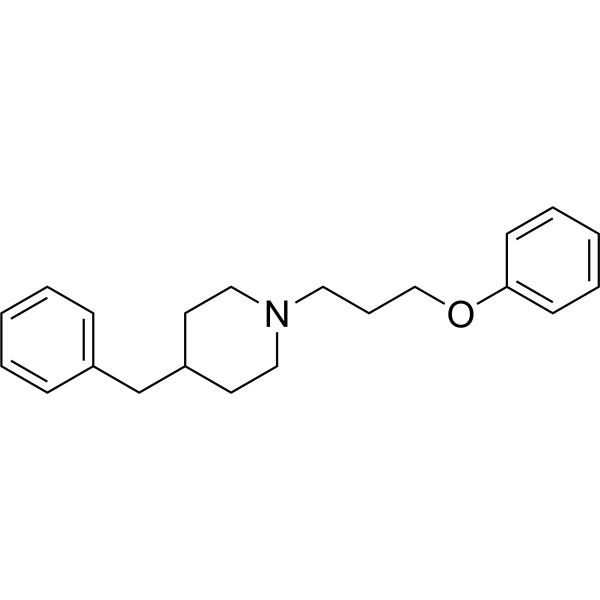
-
- HY-149803A
-
|
|
Sigma Receptor
|
Neurological Disease
|
|
S1R agonist 1 (Compound 6b) hydrochloride is a selective S1R agonist with Kis of 0.93 nM and 72 nM for S1R and S2R, respectively. S1R agonist 1 hydrochloride exhibits neuroprotection against ROS and NMDA-induced neurotoxicity .
|
-
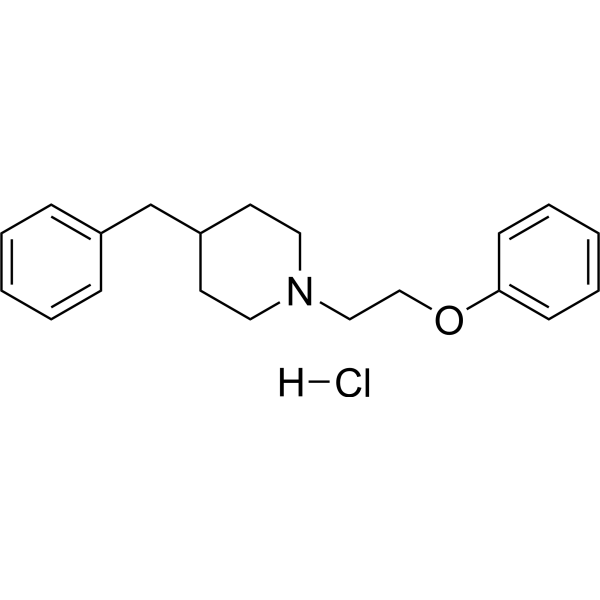
-
- HY-149804A
-
|
|
Sigma Receptor
|
Neurological Disease
|
|
S1R agonist 2 (Compound 8b) hydrochloride is a selective S1R agonist with Kis of 1.1 nM and 88 nM for S1R and S2R, respectively. S1R agonist 2 hydrochloride exhibits neuroprotection against ROS and NMDA-induced neurotoxicity .
|
-

-
- HY-139212
-
|
|
IRE1
|
Others
|
|
IXA6 is a novel IRE1/XBP1s activator, and can induce IRE1 RNase activity .
|
-
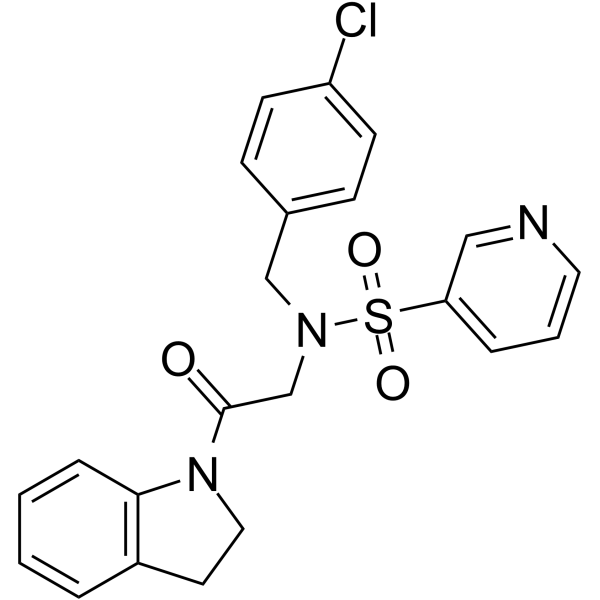
-
- HY-B0985
-
|
|
TRP Channel
|
Neurological Disease
|
|
Phenazopyridine hydrochlorideis a competitive SARM1 inhibitor, with IC50 145 μM. Phenazopyridine hydrochlorideis a TRPM8 antagonist. Phenazopyridine hydrochloride has a local anesthetic/analgesic effect. Phenazopyridine hydrochlorideis used to relieve painful symptoms of conditions such as cystitis and urethritis. Phenazopyridine hydrochloridecan promote neuronal differentiation and can also be used in the study of traumatic brain injury, peripheral neuropathy and neurodegenerative diseases [5].
|
-
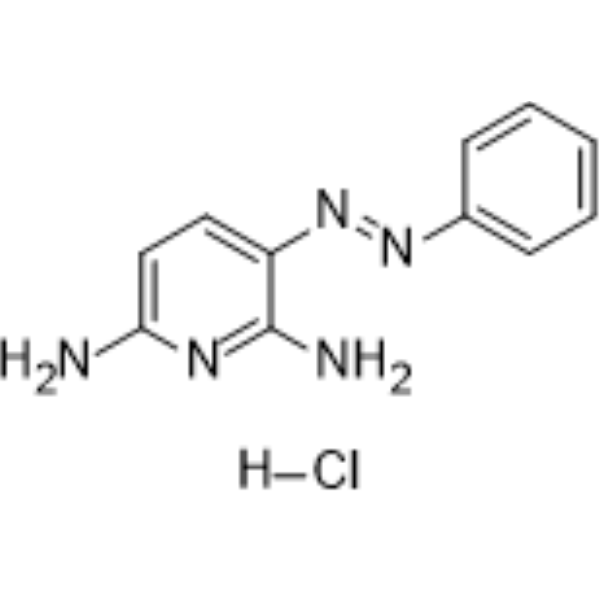
| Cat. No. |
Product Name |
Target |
Research Area |
-
- HY-106224B
-
|
Hypocretin-1 (human, rat, mouse) (acetate)
|
Orexin Receptor (OX Receptor)
|
Neurological Disease
|
|
Orexin A (Hypocretin-1) (human, rat, mouse) acetate is a hypothalamic neuropeptide with analgesic properties (crosses the blood-brain barrier). Orexin A (human, rat, mouse) acetate is also an OX1R agonist that induces the expression of BDNF and TH proteins in SH-SY5Y cells in a time- and dose-dependent manner. Orexin A (human, rat, mouse) acetate can be used in studies of appetite regulation, neurodegenerative diseases and modulation of injurious messaging .
|
-
- HY-P5902
-
-
- HY-P3275
-
|
Aβ(17-40)
|
Amyloid-β
|
Neurological Disease
|
|
β-Amyloid (17-40) (Aβ(17-40)) is a fragment of Amyloid-β peptide that has shown neurotoxic activities in SH-SY5Y and IMR-32 cells. β-Amyloid (17-40) can be used for the research of neurological disease .
|
-
- HY-P5894
-
|
Galanin-like peptide (3-32)
|
Neuropeptide Y Receptor
|
Neurological Disease
|
|
human GALP (3-32) (Galanin-like peptide (3-32)) is a potent galanin receptor agonist with high affinity for both GalR1 (IC50=33 nM) and GalR2 (IC50=15 nM) in a competitive binding study. human GALP (3-32) exhibits the high potency in altering the extracellular acidification rate of SH-SY5Y cells transfected with GalR2 (EC50=360 nM) .
|
| Cat. No. |
Product Name |
Category |
Target |
Chemical Structure |
| Cat. No. |
Product Name |
|
Classification |
-
- HY-146691
-
|
|
|
Alkynes
|
|
hMAO-B-IN-2 (compound 6j) is an orally active, potent, selective and BBB penetrated and competitive reversible hMAO-B inhibitor, with an IC50 of 4 nM. hMAO-B-IN-2 shows low toxicity and good neuroprotective effects in SH-SY5Y cell. hMAO-B-IN-2 can be used for alzheimer’s disease research . hMAO-B-IN-2 is a click chemistry reagent, itcontains an Alkyne group and can undergo copper-catalyzed azide-alkyne cycloaddition (CuAAc) with molecules containing Azide groups.
|
Your information is safe with us. * Required Fields.
Inquiry Information
- Product Name:
- Cat. No.:
- Quantity:
- MCE Japan Authorized Agent:



















































